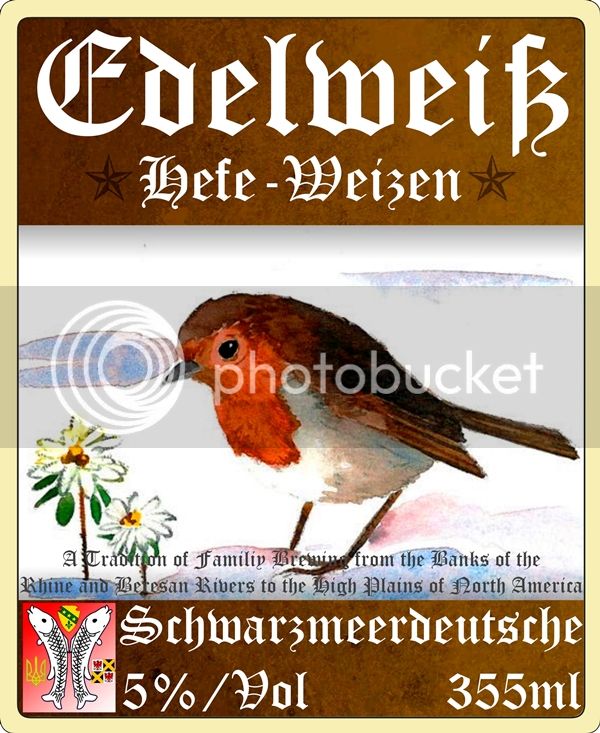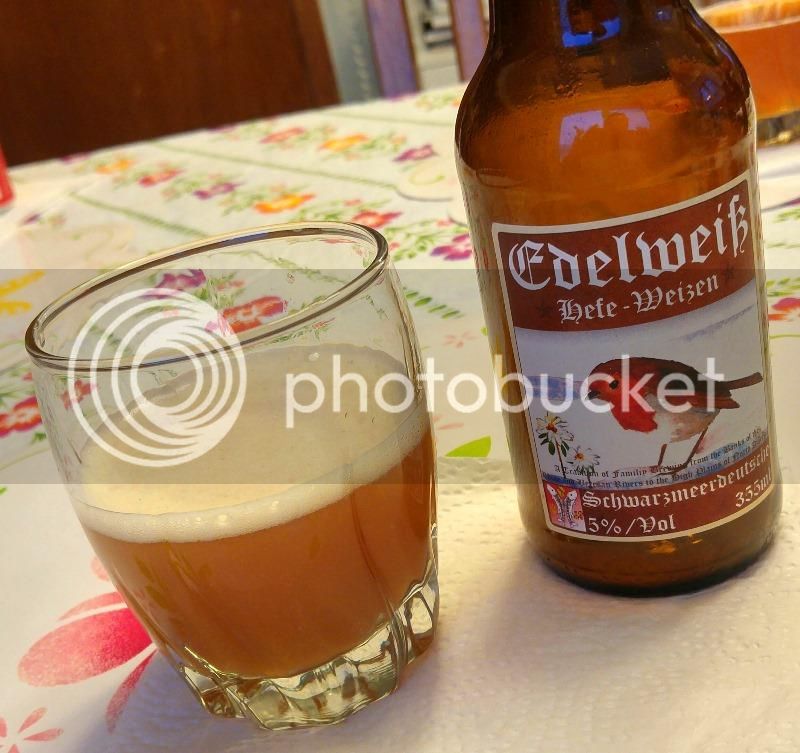Just after midnight this morning, I bottled this second batch of
Edelweiß; considering the time, I'll mark it on the calendar as 27 March 2017, rather than the 26th.
Those of you who have been following along know the score, but if you're just now jumping in, you'll notice that I bottled only 3 days after BrewDay. This is exactly what the procedure is for this beer, enabling it to develop the qualities that are unique to it. It worked quite well the first time I did it, and I am expecting it to work just as well this time.
I had plenty of time beforehand to prepare my bottles, equipment etc. When it came time to do the actual bottling, everything was all ready, and the process went smoothly and efficiently. I was able to just get 9 bottles from this batch, with a small swig left over for sampling. The whole procedure went so well that I just knew in the back of my mind that something must have gone wrong.
And, sure enough, it did.
The key point about bottling this beer 3 days after Brew Day is that no priming sugars are added - this is because the beer is carbonated by the residual sugars left in the wort after the first three days of fermenting. But guess what? I plopped four Brewer's Best Conditioning tablets into each bottle. This would have been perfect for "medium carbonation" under nearly any other circumstance, but not this one.
Luckily, I realized my error as I was capping the last bottle and swigging down my tiny sample, so I immediately pulled the caps off and separated the beer from the conditioning tablets. I then re-bottled the beer, coming up short on the 9th bottle by just a tiny bit; in fact, the amount that was short is about the same as the tiny sample swig that I originally got out of the batch. It amounted to maybe half an inch in the neck of the bottle, but I capped it anyway, figuring that it can be the first beer I sample in two weeks (plus a day or two in the refrigerator).
So, all's well that ends well - my only concern now is the possibility of oxidation. If it were any other batch of beer, I'd be really worried; however, with this one - bottled in the middle of the fermentation process - I'm hoping that the risk will be minimized a bit as the yeasts are still pretty active. I might be right, or I might be wrong - we'll find out. I did have to re-bottle one other previous batch of beer; this was last year with my Chestnut Brown Ale, and I forget the reason why, but in that case, the entire batch actually had to be run through a fine-mesh strainer before bottling. I was sure that it would be oxidized, but luckily everything turned out fine. I'm hoping that the same will be the case this time.
Anyway, that's that, for a couple of weeks; this batch has been cursed with little glitches since I started, so I'm a little worried about it; but then again, I've learned over time that we homebrewers are not as critical to beer making as we think we are - for the most part, the process and the beer take care of themselves....
I'd like to think your Big Spring water linked in Post 41 is just fine for wheat beers.
If you're a fan of light/pale SRM German and American wheats like I am, that base water profile should work. One of the references I used to make my last brew was Chris Colby's advice from his blog on German wheat beer. He has a five part series on that beer style. It's very detailed and I'll give you the link.
http://beerandwinejournal.com/german-wheat-beer-intro/
The last wheat beer I made using Colby's info was very good in my opinion. It was a partial mash (Briess LME with single decoction Belgian Pilsner and red wheat near 152F). Hops were Hallertau and Hallertau Blanc, yeast WLP 320. One caveat with this particular yeast is you won't get the overbearing phenolic of cloves or the ester of banana - it's mild.
The base water I started with was Poland Springs bottled water in gallon jugs, 6 gals for about $5.20.
I added CaCl, a pinch of Epsom salts, and NaHCO3 set for a 5gal. batch. This water is "soft" to start out with and doesn't have quite the hardness of the Big Springs water, but works nonetheless if you go by Colby's advice.
This is great information, Lefou - thank you for sharing it! I'll read through it and absorb it into what I hope I know. I'm loving the
hefeweizens more and more as I try more and more.







![Craft A Brew - Safale S-04 Dry Yeast - Fermentis - English Ale Dry Yeast - For English and American Ales and Hard Apple Ciders - Ingredients for Home Brewing - Beer Making Supplies - [1 Pack]](https://m.media-amazon.com/images/I/41fVGNh6JfL._SL500_.jpg)






















































